Z97 Mini-ITX Review at $140: ASRock, MSI and GIGABYTE
by Ian Cutress on July 23, 2014 3:00 AM ESTZ97 Mini-ITX Roundup Conclusion
ASRock Z97E-ITX/AC
The big plus in the bucket for ASRock’s system is the support for both types of PCIe storage that Z97 brings. The M.2 on the rear is suitable for 30 and 42 mm drives, and shares lanes with the SATA Express port on the top of the board. Unfortunately therein lies several issues – the availability of PCIe storage drives, and whether they will be available in the desired sizes. Until we have had M.2 in the market, either using the PCIe or SATA protocols, for a good 12 months will we be able to understand what length of drive is most favored. If ASRock could have placed the connector at right angles, and thus offered more size options, then perhaps this would not be an issue:
Also, with respect to the zero SATA Express drives currently on the market, the large SATAe connector does no favors by being in between the PCIe slot and the DRAM slots for cable routing:
For those not interested in PCIe storage, at least the motherboard has six SATA ports, but these are all facing the same way such that locking SATA cables could be frustrating to remove.
Also on the components front, while the other two motherboards use two NICs and an ALC892 audio codec, the ASRock swaps a NIC for a higher level codec – the ALC1150. This shows through in our audio tests quite considerably, and given the addition to 802.11ac to all three motherboards, one might argue if two NICs are technically needed and it would be worth upgrading other features. At least the NIC used is the I218-V, the highest model of any motherboard tested today.
One of the downsides of the Z97E-ITX/AC in terms of out-of-the-box is the performance, due to the lack of MultiCore Enhancement by default. Despite it being enabled in our BIOS, it is obvious through some of our multithreaded benchmarks (HandBrake, POV-Ray) that the system does not implement that 39x multiplier across all loading. This might be easily avoided by doing some simple adjustments in the BIOS, but it is not an out-of-the-box benefit like the other motherboards.
The DPC Latency of the Z97E-ITX/AC comes 3rd, but the audio range and distortion numbers are significantly better. Boot timings also come out on top, and I also enjoyed the large range of automatic overclock options.
The BIOS and Software work well together, though the BIOS lacks the proper interactive fan control system that the software has. I find navigating the BIOS easy (a trait shared with the MSI board) and the software is easy on the eye.
Unlike the other two motherboards, I did not need to write any extra notes when testing the ASRock. This typically reflects a very easy-to-use package that works out of the box - a feature that is sometimes lacking with this very mature product segment.
MSI Z97I AC
One of the main issues with lower cost mini-ITX motherboards is routing through the PCB. Due to the low cost nature, most of these PCBs are four layers, or six layers maximum, meaning that care has to be taken for port and feature routing. The ideal mini-ITX motherboard has space for power connectors and ports to the right of the DRAM slots, and the opportunity to place cables cleanly and evenly. Perhaps four layers is not enough for this, because when I saw the MSI Z97I AC in the flesh, the positioning of the 4-pin CPU connector gave me cause for concern. Unless the power supply is mounted above the motherboard, there is going to be issues with wires climbing across the motherboard. MSI’s decision to place the CPU socket lower down on the motherboard limits the locations for the 4-pin power connector, and it might have been in this place at the request of a customer or a tradeoff with the other ports. The same can be said of the ASRock as well, with its 8-pin CPU power connector.
That aside, MSI comes hard in with the networking options, offering two Realtek NICs and the 2T2R 802.11ac Intel AC7260 WiFi. The Realtek ALC892 audio codec is not the best out of this three-motherboard review, but some users might be pleased with the removal of the VGA connector from the rear of the motherboard. The Z97I AC comes with four SATA 6 Gbps ports (note, the chipset and other motherboards offer six), a USB 3.0 header and four USB 3.0 ports but no PCIe storage options. The ClearCMOS and Go2BIOS buttons on the rear panel are a nice touch for users who need to adjust overclocks.
The BIOS and Software packages from MSI are growing in usability and efficiency, with the fan controls in the BIOS being a big plus along with the XMP button. The software gives fan controls as well as a RAMDisk option, although the ease at which 2.1 volts could be applied to the CPU is a cause for concern.
For performance, the MSI matches the GIGABYTE in beating the ASRock, especially in multithreaded benchmarks and also very slightly (<2%) in gaming benchmarks. The audio codec puts the MSI behind the ASRock though, and boot times are the worst of the three. The DPC Latency comes out on top at 43 microseconds, but for this we had to disable the WiFi module. Overclocking the MSI Z97I AC was normal, although it is worth noting that OC Genie did not push much (4.0 GHz) and the stock voltage on the platform seemed higher than the others (1.169 volts compared to 1.064-1.117).
In isolation, the MSI Z97I AC might come across as a nice motherboard that is fairly easy to use. But when placed against the competition, there seems to be other products out on the market, for a similar price, that might offer that better experience. Choosing Realtek for both the NICs and mid-range audio codec is cost saving measure, along with fewer SATA ports or no extra controllers. I will certainly offer kudos to the MSI BIOS team, who are making changes in the right direction for sure.
GIGABYTE Z97N-WIFI
A motherboard that is easy to set up, in terms of cabling, is always good to have on the test bed. The Z97N-WIFI is one such example, and this becomes one of its major selling points. By placing more of the important headers around the edges of the motherboard PCB, adding in the power cables, fan cables, SATA cables and any other cables makes building and repairing an easier job. The position of the socket, alongside the lack of a power delivery heatsink, would suggest that any size air cooler would fit with appropriate memory.
That lack of a power delivery heatsink might initially cause concern, however our testing was not in any way affected by the lack of one being there. GIGABYTE is claiming to use high efficiency components (over the standard) in this area, and our overclocking did not suffer as a result.
The combination of an Intel and an Atheros NIC seems like a strange choice here. Atheros also makes the Killer NIC, which GIGABYTE uses on a few motherboard models, but typically a Realtek NIC is used with a Realtek audio codec because Realtek offers a deal when used together. I might postulate that either GIGABYTE has spare stock of the Atheros AR81 NIC or there is a cost beneficial deal in place.
Like the ASRock, this Z97N-WIFI uses six SATA ports, but we have two on the edge of the PCB which should cover most HDD+SSD / SSD+ODD setups. Using a third or fourth drive requires a cable over some DRAM, and that would cover most users. Unfortunately one part that the GIGABYTE board gets marked down on is the ALC892 audio codec, which does not perform as well as the ASRock’s ALC1150.
For the BIOS, GIGABYTE’s mash of Startup Guide, HD mode and Classic mode is starting to become a bubbling cauldron of everything. GIGABYTE needs to decide if they are going to continue to support both modes or focus in perfecting one. A lack of focus means a split of resources, which is not always a good thing.
In terms of performance, because the GIGABYTE uses MultiCore Turbo, it joins the MSI in beating the ASRock, particularly in multi-threaded loads and a few frames in gaming. It sits in the middle of the three for DPC latency, audio results and boot time, but wins on power delta between long idle and CPU load. Automatic overclocking seemed overly aggressive, hitting 87ºC peak temperature with the lowest 4.3 GHz option, but the manual overclock performed well up to 4.5 GHz, hitting 4.6 GHz with high temperatures.
The GIGABYTE Z97N-WIFI layout should make a first-time builder’s job easier than the other two, and the use of dual HDMI might encourage users with middle-of-the-road monitors to go dual screen when using the IGP. Performance out of the box at stock is better than expected, although if you want PCIe storage or better onboard audio, there are boards that focus on those qualities.
More Than Spot The Difference
For each of these three motherboards, being very similar on price, there are several major areas I would consider for a regular under-the-desk/next-to-the-monitor home system. We rank the best from each area:
Feature Set: ASRock Z97E-ITX/AC
The Z97E-ITX/AC gets this one for its choice of an Intel NIC over Realtek, the upgraded audio codec and six SATA ports. The addition of PCIe storage options is an extra, even though the storage market still has to adjust to these new connectors which will come in time.
Motherboard Layout: GIGABYTE Z97N-WIFI
Hands down, the GIGABYTE wins this category for placing nearly all of its onboard headers around the edge of the PCB. Both the 24-pin ATX and the 4-pin CPU power connectors are here, along with the two fan headers and USB 2.0/3.0 headers. For first time builders, or those focusing on cable management, the Z97N-WIFI has the edge.
Out-of-the-Box Performance: MSI Z97I AC and GIGABYTE Z97N-WIFI
All three motherboards play tit-for-tat in the system benchmarks (MSI gets the best DPC Latency, GIGABYTE gets the best power draw delta, ASRock gets the best audio), but both the MSI and GIGABYTE boards win here due to their implementation of MultiCore Turbo, which allows the CPU to run at maximum turbo for any load. This gives both of these boards an extra element of performance (2-5%) in heavy CPU workloads, with the odd frame per second or two in the gaming benchmarks as well.
BIOS and Software: ASRock Z97E-ITX/AC and MSI Z97I AC
Both ASRock and MSI have got the visuals of their packages on a good direction, particularly ASRock in the software and MSI in the BIOS. Both use the Board Explorer feature to allow users to see what is installed as well. MSI has the better BIOS from a visual perspective, while ASRock’s layout might be more welcome. In the software, I enjoy the ASRock’s green on white more than the blue on black of the MSI or GIGABYTE, as well as the software package that ASRock is spending a lot of time on. MSI still has the best update software of the three, although that CPU OC option to hit 2.1 volts has to go.
Conclusion
If I were to assign a point to each of the four categories above, the ASRock Z97E-ITX/AC and GIGABYTE Z97N-WIFI would be joint first with 1.5 points each. Neither has the ideal package, and in fact some amalgam of the two would be great if it could fit into this price point. $140 is a tight squeeze for an Intel platform aimed at both at new features and ease-of-use, rather than something that should just get up and go. My recommendations are as follows:
ASRock Z97E-ITX/AC: For a user looking for feature set and better onboard audio, also to invest into PCIe storage in the future.
MSI Z97I AC: Better CPU performance and nice BIOS to learn, but potential cable management issues and fewer features.
GIGABYTE Z97N-WIFI: For a new builder or user wanting easy placement, with better CPU performance.
For mini-ITX Z97 motherboards two other tiers also exist, with four motherboards split between $160 and $200 from ASUS, GIGABYTE, MSI and EVGA. With any luck, our next mini-ITX roundups will have several of these. Stay tuned for those reviews.


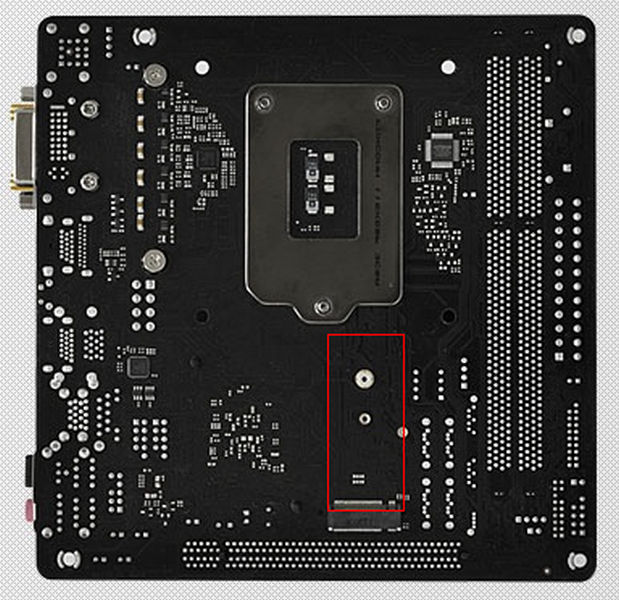
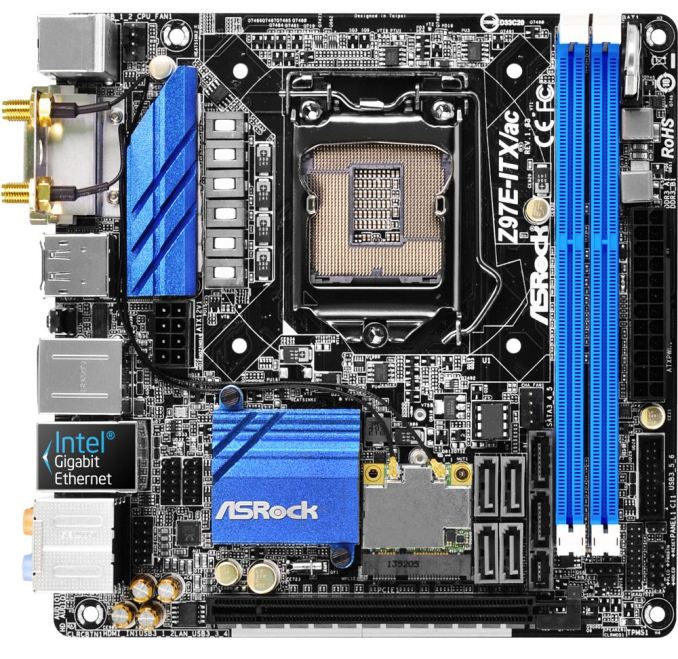

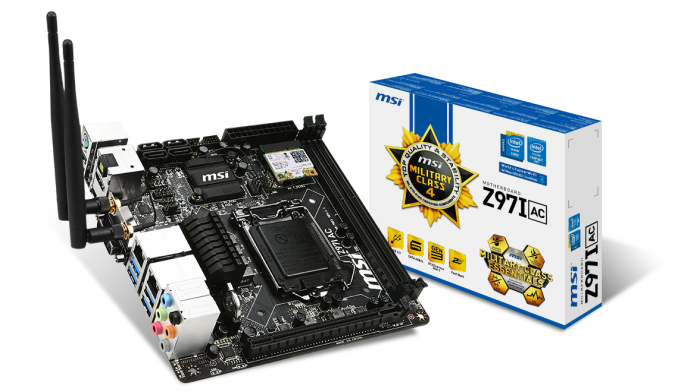
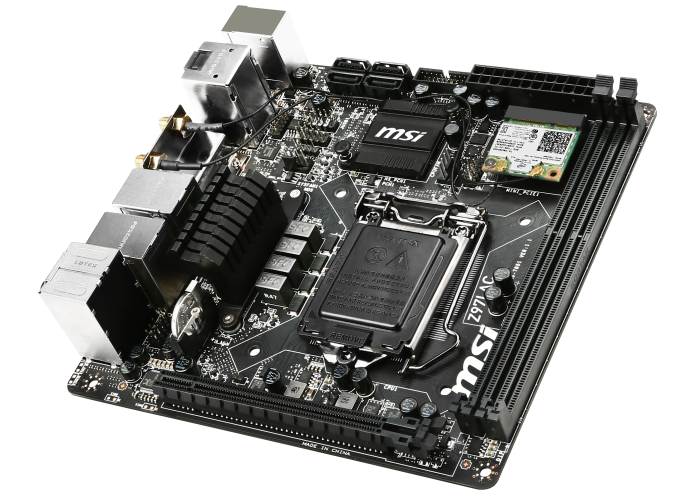
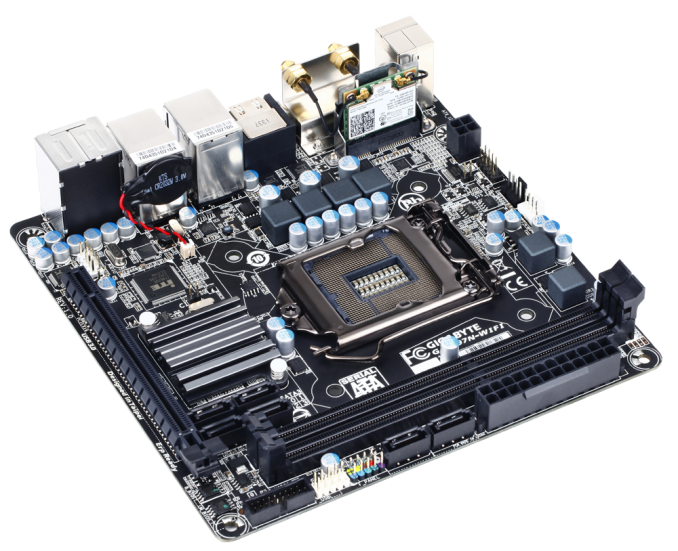









38 Comments
View All Comments
pierrot - Wednesday, July 23, 2014 - link
Great article, you read my mind with this, Im planning on an ITX form factor for my next buildZap - Wednesday, July 23, 2014 - link
Do it! Unless you have a need for more than six HDDs or more than one graphics card there is little reason to go bigger and have a mostly empty case.Alternately there is also the little loved micro ATX. Not as "normal" as ATX and not as sexy as mini ITX, but IMO a very good alternative that gives you room for dual graphics, or some expansion cards.
PICman - Wednesday, July 23, 2014 - link
Excellent review. Every time I see a review of ITX boards I'm amused by the giant 2x24 power connector plus an additional 2x2 or 2x4. Every other connector on the original IBM PC has an updated version. Has there been any discussion of a smaller power connector?Aikouka - Wednesday, July 23, 2014 - link
I was working in a Dell workstation a few weeks back, and I was rather surprised to see that it didn't have a standard ATX power cable. Its power cable was probably about half the size, and if I remember correctly, the motherboard also provided a connector for a cable that provided power to the hard drive(s).I would definitely like to see someone be willing to revamp the power delivery as dealing with that monstrous cable is definitely my least favorite part -- especially on cases with too little room in the back!
DanNeely - Wednesday, July 23, 2014 - link
Dell's been using proprietary cables on/off for the last 20 years. I'm glad the current version uses different connectors though. IN the past they've had proprietary cables using AT or ATX standard sockets but with different pinouts so you'd smoke your hardware if you didn't realize it and tried to use a standard PSU as a replacement.DanNeely - Wednesday, July 23, 2014 - link
I've jumped on my soapbox more than once grumbling about the stupidity of a cable that mostly provides 3/3/5v power when the death of legacy PCI has removed the last significant 3.3v component and 5v is only still used for USB more than once in the comments here.But between the failure of BTX and the fact that the desktop market is generally seen as being in terminal decline I'm not optimistic about the likelihood of ever getting a 12V centric CTX PSU standard. If pigs ever do fly though, instead of mashing the entire 4/8pin 12v connector into the cut down remnant of the 24pin cable, I'd rather see the main connector only have enough 12V to run an full power CPU+IGP (or lower power CPU + discrete GPU) based system, with the extra power for a full power CPU and PCIe GFX card in a separate and optional cable: Both to keep cost down for lower end systems, and because the 24 wire cable is a major pain to route because of its thickness.
PICman - Wednesday, July 23, 2014 - link
While we're dreaming, we might as well make the voltage 24 or 48 V to reduce the current and improve the efficiency of the switching power supply.DanNeely - Wednesday, July 23, 2014 - link
Maybe...Just rationalizing the pinout would be a much lower impact change and could be done with adapter cables in both directions for reasonably current hardware (most of the 3.3/5v capacity in the 24pin is unused on both sides of the cable).
Unless PCIe refreshed to use the higher voltage as well (and for a number of transition years in any case) we'd still need to provide a lot of 12V power. The USB charging committee's one cable to bind them all goals include 5A@2v power (for faster tablet charging and for low power laptops) which'd bring an additional long term need for significant amounts of 12v into the system. They also want a 5A@20v step for mainstream laptops; so if we did shift to a higher DC voltage that might be a better option instead.
The_Assimilator - Friday, July 25, 2014 - link
24VDC or even better, 48VDC needs to become the new industry standard immediately. When you have a card like the 295X2 that requires 600W but can only pull that over a 12V line (=50 amps!!!), you have an obvious problem. It's one I fear only Intel can solve, the question is do they have the determination to do it?Personally I believe that the PC industry will embrace a new power delivery standard. It means everything will have to be redesigned, which means they get to sell more products. The successor to ATX (which is not BTX) could very well be the boost the PC industry's been looking for.
Mr Perfect - Thursday, July 24, 2014 - link
If they ever did change things, any reason why they couldn't just pump in one 12v plug and then let the mother board do DC-to-DC conversion for other voltages? Smaller embedded boards do this, but I don't know if it would scale up well.